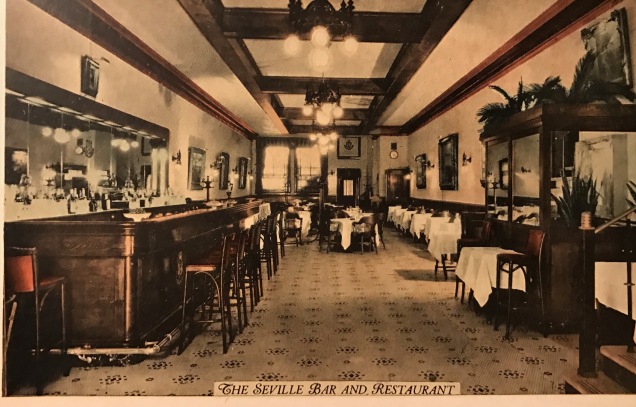
More than 100 miles from home, in an antique shop in the Hudson River Valley, I discovered this postcard with an image of a street just a few blocks from my office in St. George, Staten Island. Mailed from Port Richmond on July 18, 1908, the postcard depicts a scene from Richmond Terrace, in New Brighton, Staten Island.
“We are out on a trolley trip to Port Richmond, Staten Island. Passed through this place,” wrote N.A. Chase to a Miss Elsie McKay in Fishkill-on-Hudson, New York.
I stared at the image, looking for clues as to which block this postcard depicted. It is clearly not the Richmond Terrace of today, which is largely lined with industry on the North side, facing the Kill van Kull, and residential developments on the South Side. The postcard looks more like a scene out of Brooklyn, lined with two- and three-story buildings—businesses on the lower floor and, presumably, residences above. Power lines, trolley tracks and horse-drawn carriages line the middle of the street.
I shared the postcard first with colleagues who are longtime New Brighton residents. They were stumped. I then shared it with a local author and preservationist. He, too, could not identify the block, but he promised to do some research and, sure enough, he got back to me with a letter from the chief curator of Historic Richmondtown/Staten Island Historical Society.
If you look carefully at the left side of the street, you can see the inscription “Wanty/Harness” on the front of one of the buildings. Joseph Wanty was a harnessmaker who was located on Richmond Terrace in New Brighton. Here’s some of the information we have about him.
The Richmond County Fair program for 1895 has an ad: “All Grades of HARNESS / Every Article necessary for / HORSE, / CARRIAGE and / STABLE. / Joseph W. Wanty, / 371 Richmond Terrace, New Brighton, S.I. / ALL GOODS / CARED FOR AND DELIVERED / FREE.”
He had a full page ad in the 1905 Richmond County Agricultural Society program: “J.W. WANTY, / Hand Made Harness for all Purposes / A GOOD STOCK OF BLANKETS, WHIPS, BITS, / COLLARS, SADDLES AND STABLE UTENSILS, ETC. / 371 RICHMOND TERRACE, NEW BRIGHTON, N.Y.”
The Richmond Borough Directory for 1912 lists Joseph W. Wanty under the category “Harness Makers,” with an address of 509 Richmond Terrace, New Brighton.
Both of his addresses, 371 Richmond Terrace and later 509 Richmond Terrace, are close to the foot of Jersey Street.
Mystery solved, thanks to some sharp eyes and diligent research from Historic Richmondtown!
Now, my only question is, why was N.A. Chase going to Port Richmond?
Today, you would have to look closely for clues to know Port Richmond’s rich history as a commercial and industrial hub. Port Richmond was settled by Dutch and French colonists in the 1690s and early 1700s. Aaron Burr, our nation’s third vice president, died there in 1836—around the same time that the neighborhood’s street grid was laid out.
When N.A. Chase visited the neighborhood more than 70 years later, trolley lines connected it to St. George to the east, and Bulls Head to the South. Port Richmond Avenue, known then as Richmond Avenue, was on its way to becoming known as the “Fifth Avenue” of Staten Island, a designation that slipped away as the shopping hub shifted to the Staten Island Mall in the later half of the 20th Century.
Though it may not seem like a destination today, chances are, N.A. Chase was en route to do some shopping in what was then a bustling neighborhood of Staten Island.









